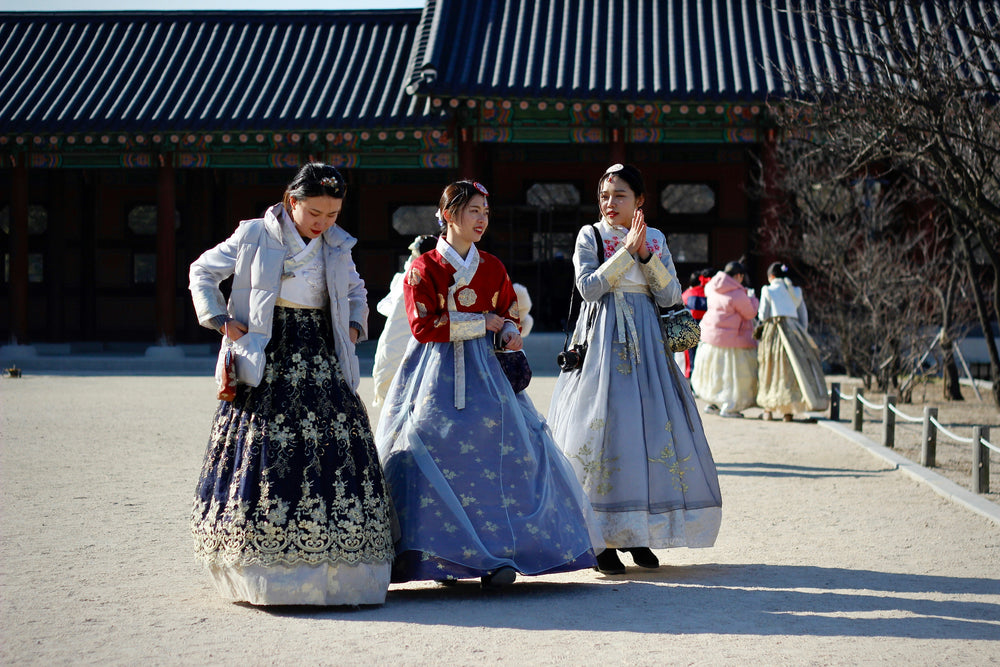
Korean fashion has undergone a remarkable transformation over the decades, evolving from traditional hanbok to a vibrant and diverse industry that influences global trends today. This evolution reflects not just changes in styles but also shifts in culture, social dynamics, and technological advancements. In this post, we’ll explore the key trends and milestones that have shaped Korean fashion through the decades.
1. Traditional Beginnings: The Hanbok Era (Pre-20th Century)
The hanbok, a traditional Korean garment, has been worn for centuries. Characterized by its vibrant colors and simple lines, the hanbok was designed to emphasize comfort and modesty. The style has remained a symbol of Korean culture and is often worn during celebrations, holidays, and significant life events. Its elegant silhouette and intricate embroidery continue to inspire contemporary designers.
2. Post-War Influence: The 1950s and 1960s
Following the Korean War, Western fashion began to infiltrate the local culture. The 1950s and 1960s saw the rise of tailored suits and dresses as Western influences merged with traditional aesthetics. Women often wore fitted dresses paired with jackets, while men sported classic suits, reflecting the desire for modernity and progress.
3. Youth Revolution: The 1970s and 1980s
The 1970s marked a significant shift in Korean fashion, driven by a youthful counterculture and a growing interest in music and entertainment. This era saw the emergence of vibrant colors, bold prints, and unisex styles. The influence of rock and pop music played a crucial role in shaping fashion choices, with youth embracing styles inspired by global trends. Denim became a staple, and leisurewear gained popularity, reflecting a more relaxed approach to fashion.
4. Korean Wave: The 1990s and Early 2000s
The 1990s introduced the Korean Wave (Hallyu), a cultural phenomenon that included K-drama, K-pop, and fashion. The rise of pop idols brought attention to street style, with trends like oversized clothing, vibrant accessories, and graphic tees gaining popularity. Designers began experimenting with unique silhouettes and materials, paving the way for a more creative approach to fashion.
5. Global Recognition: The 2010s
As K-pop and K-dramas gained international acclaim, Korean fashion began to capture global attention. Designers such as Lee Sang-bong and Kim Seo-ryong showcased their work at international fashion weeks, promoting contemporary Korean aesthetics. The 2010s also saw the rise of “fast fashion” retailers, making trendy styles accessible to a wider audience. Social media platforms like Instagram further propelled the popularity of Korean street style, inspiring fashion enthusiasts worldwide.
6. Sustainable and Inclusive Fashion: The 2020s and Beyond
Today, the evolution of Korean fashion continues to reflect broader societal changes. There is a growing emphasis on sustainability, with many designers prioritizing eco-friendly materials and ethical production practices. The industry is becoming more inclusive, embracing diverse body types and styles. Korean fashion is not just about trends; it’s a platform for self-expression and individuality.
Conclusion
The evolution of Korean fashion is a testament to its rich cultural heritage and dynamic adaptability. From traditional hanbok to contemporary streetwear, each decade has contributed to the unique tapestry of styles we see today. As Koriah continues to celebrate this vibrant industry, we invite you to explore the diverse collection of Korean fashion available at our store. Whether you’re drawn to timeless pieces or the latest trends, there’s something for everyone in the world of K-fashion.
